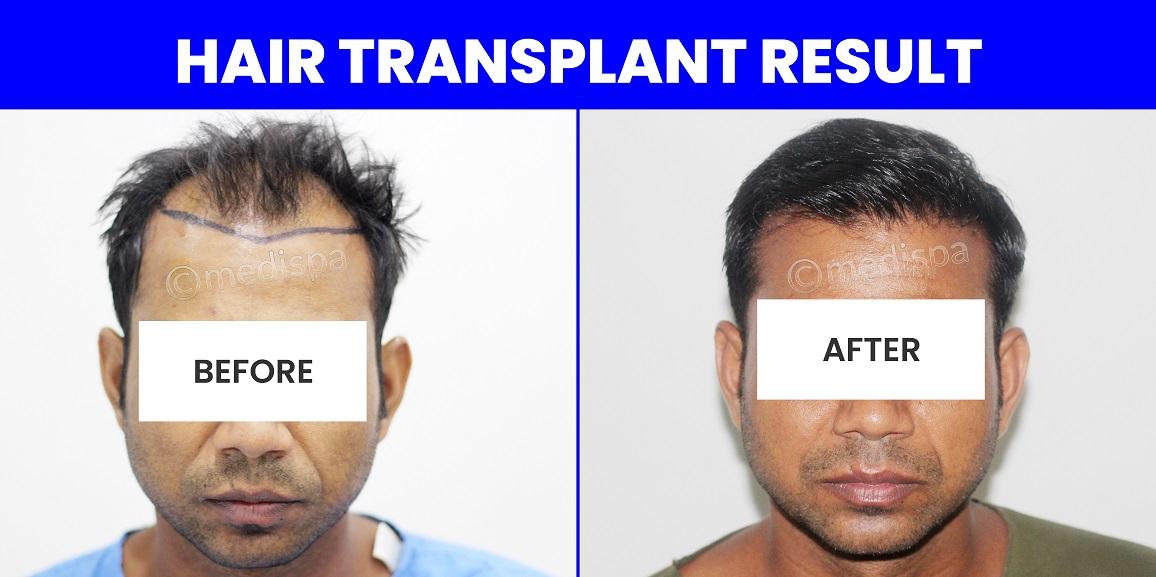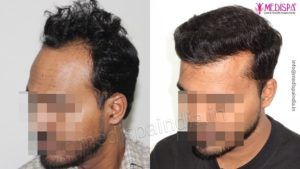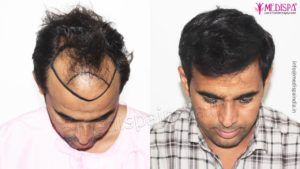
Males are equally aware of their appearance and experience a similar psychological impact from hair loss as females do. The prospect of going bald is undesirable, as it can lead to social and professional embarrassment stemming from diminished self-esteem. Genetic factors are the most prevalent cause of hair loss in men, and individuals may want to be vigilant if their parents or grandparents have experienced similar issues.
Recently, hair transplants have gained significant attention, and the term has become widely recognized. However, there are essential details to understand before pursuing a hair transplant procedure, which will help you comprehend the process better and approach it with assurance.
Male hair transplant
Male hair transplant is a surgical procedure conducted on an outpatient basis, which entails the extraction of hair grafts from designated donor areas that are specifically chosen for their permanent hair roots. These selected roots are subsequently implanted into the areas experiencing hair loss. The procedure is relatively straightforward and poses minimal risk when executed by a skilled professional; however, it can lead to serious complications if performed by an inexperienced practitioner.
Dr. Suneet Soni is recognized as one of the leading hair transplant surgeons in India, having earned international acclaim for his exceptional skills in this field. His extensive qualifications and unmatched expertise have established him as a prominent figure among the world’s top hair transplant surgeons.
If you are in search of reliable guidance and an outstanding male hair transplant surgeon, you have come to the right place, as Dr. Suneet Soni is frequently discussed and highly regarded in the realm of hair transplantation.
To assist you in making an informed decision regarding the procedure, several key facts about male hair transplant are outlined below.
Hair transplant technique
Two primary techniques are currently employed for hair transplants, each characterized by its unique graft harvesting methods:
- Strip method for FUT hair transplants: In the strip method, a segment or strip of scalp skin is excised and sent to the graft separation area for meticulous dissection. An advanced technique known as trichophytic closure is utilized to suture the donor site, resulting in scars that are nearly imperceptible, akin to those produced by the FUE method. The individual grafts obtained are then implanted into the recipient’s balding regions. This approach is particularly suitable for cases of significant hair loss, requiring the transplantation of approximately 3000 to 3500 hair grafts.
- FUE hair transplant technique involves the extraction of individual hair follicles from the donor site, which are then implanted directly into the areas of hair loss on the recipient’s scalp. This process entails the removal of single hair follicles from beneath the skin, and since the positioning of each hair root is determined by the angle of the hair shaft, the procedure is conducted without direct visualization. The FUE method is recommended for individuals experiencing early stages of baldness as well as for facial hair transplants, including those for the beard, mustache, and eyebrows. Typically, this technique allows for the harvesting of approximately 2000 to 2500 hair follicles.
The combination of Follicular Unit Transplantation (FUT) and Follicular Unit Extraction (FUE) represents the most effective strategy for addressing severe cases of hair loss, particularly when either technique has reached its maximum potential for generating sufficient hair follicular units. This method allows for the extraction of over 4000 hair grafts, with the capability to preserve hair follicles for up to three additional sessions. In this approach, the majority of grafts, typically between 3000 and 3500, are obtained through the FUT technique. Subsequently, the FUE method is employed to collect any remaining grafts. Since the FUE procedure focuses solely on the extraction of residual hair grafts, it minimizes damage to the grafts, providing an additional advantage.
Hair transplant side effects
Hair transplant is a minor outpatient surgical procedure that typically does not result in any significant morbidity following the operation. While there are some mild complications associated with the procedure, these do not require any medical intervention and generally resolve on their own within approximately one week. The potential complications related to hair transplant include:
- Swelling
- Itching
- Mild pain
- Numbness
- Infection
- Scalp pimples
These complications are transient and usually resolve with little to no intervention. Patients can resume their normal activities as early as the day after the procedure. Therefore, it is considered a very safe procedure that justifies both the financial investment and the time involved.
Hair transplant cost
The hair transplant cost in India is significantly lower than that in Western countries. On average, the expense for a hair transplant in India ranges from 70,000 to 400,000 INR, primarily influenced by the number of hair follicles needed to address the balding area. Most clinics operate on a per-graft pricing model, with costs varying between 20 and 125 INR per graft.
Medispa hair transplant clinic provides top-tier hair transplant services at a competitive price. We welcome you to reach out for any inquiries and to achieve optimal hair transplant outcomes.
What is the necessity of hair transplantation?
The demand for hair transplant in India is increasing globally, as they are regarded as one of the most effective solutions for hair loss. Individuals who had lost hope of regaining hair on their bald heads now have a renewed chance through hair transplants. The necessity of hair transplantation as a remedy for hair loss is evident for several reasons:
- Unlike other hair loss treatments that offer only temporary solutions, hair transplantation provides permanent results.
- This procedure yields results that appear remarkably natural, setting it apart from other hair loss treatment options.
- It offers lasting benefits for future sessions.







